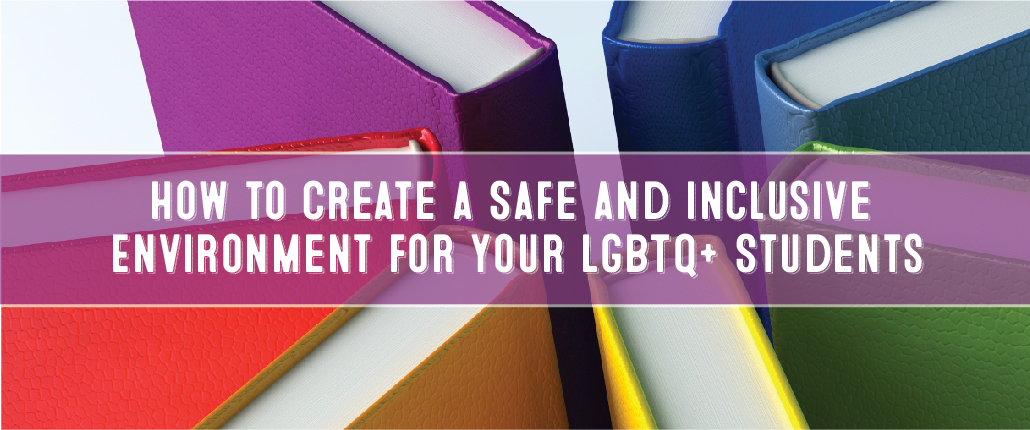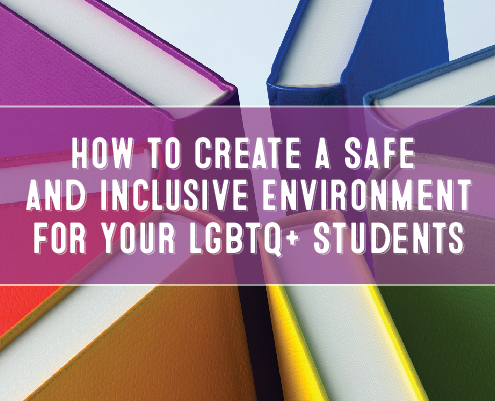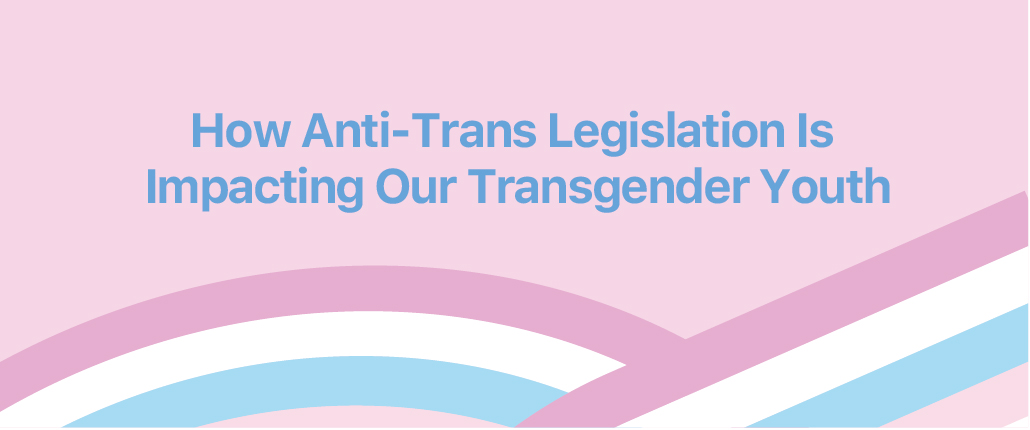How to Create a Safe and Inclusive Atmosphere for your LGBTQ+ Students

How to Create a Safe and Inclusive Atmosphere for your LGBTQ+ Students
Going back to school can cause a variety of emotions for students, and LGBTQ+ students are no exception. Many queer and transgender young people have a particular set of challenges to navigate in school settings. With Anti-LGBTQ+ Legislation at an all time high, the mental health impact of our LGBTQ+ students is even greater.
The Trevor Projects’ National Survey on LGBTQ Youth Mental Health reports:
- 6 in 10 LGBT students report feeling unsafe at school because of their sexual orientation.
- LGBTQ youth are more than four times as likely to attempt suicide than their peers
It is important to emphasize that LGBTQ youth are not inherently prone to suicide risk and mental health issues because of their sexual orientation or gender identity, but are at higher risk because of how they are mistreated and stigmatized in society. (Trevor Project, 2022)
As a teacher, staff or other student support individual, here is the statistic that is most important to remember:
LGBTQ youth who report having at least one accepting adult in their lives are 40% less likely to report a suicide attempt in the past year. Teachers and school staff can make a profound difference in their LGBTQ+ students’ lives by showing them support, affirmation and acceptance. Being an accepting adult could save one of your students’ lives.
Here are some simple but meaningful ways that you can be an affirming adult for your students:
Ask Your Students at the Beginning of the School Year How You Should Refer to Them
Some students may use a different name or pronouns than you may first assume. Some students are in the process of changing their pronouns or names. One helpful tool is creating a “getting to know you” form that includes asking students what pronouns and name they would like you to use for them at the beginning of the school year. Because some students live in homes that do not affirm their identity, make sure to ask whether or not it’s okay to use these pronouns and name when speaking with their parents or caregivers. This form is a great tool for any educator getting started.
Re-Think Your Use of Gendered Language
Most of us have been raised to think of gender as a binary (something consisting of just two parts). In this case, it is the idea that there are only two genders: male/female, boy/girl. Expanding your vocabulary and using non gendered language is one of the simplest but most affirming ways to create an inclusive atmosphere for all students, and to also avoid misgendering students. Instead of saying “boys and girls” or “ladies and gentlemen,” try “folks”, “everyone” or “friends” when addressing your classroom or groups of students. Use your students’ names as opposed to referring to them with “Mr. or Ms.”
Be Visible
Many people in the LGBTQ+ community, youth and adults alike, rely on non-verbal cues to know whether someone or somewhere is safe and accepting. Small items like a rainbow flag, a safe space sticker, a rainbow lanyard to hold your ID badge, or a pronoun pin that says your own pronouns can be a visible signal to your students that you are going to affirm and support their identity. To make your classroom or office as welcoming as possible, here’s an amazing and free Safe Space Kit from an organization called GLSEN that offers free downloadable safe space posters and other LGBTQ+ affirming items.
Be Vocal
Part of being visible also means being vocal and standing up to anti-LGBTQ language and behaviors. If anti-LGBTQ+ discrimination happens at school and is not addressed by adults, this sends a message to your students that this behavior is acceptable. The Human Rights Campaign offers a variety of helpful tools to help you stop harassment as opposed to ignoring it, be proactive, and educate your students.
Keep an Open Mind & Remember It’s Okay to Make Mistakes
Do you have a student whose identity you don’t completely understand? Maybe you keep slipping up on pronouns, or feel like you don’t know the right terminology? It’s okay to make mistakes or not understand everything right away. The most important part is to keep an open mind, apologize when you make a mistake, and be committed to continually getting to know your students. Need a few more definitions, or a refresher on some LGBTQ+ terminology? Here’s a helpful glossary that can help shed light on the subject!
Consider Starting a GSA or Other LGBTQ+ Club at Your School
Being the adult advisor or leader of your school’s GSA can go a long way toward creating a safer and more welcoming environment for LGBTQ+ students. If you need help getting started, the GSA Network’s 10 Steps to Creating a GSA is an amazing resource! Need more help? Kaleidoscope is happy to provide you with even more resources to help kick start your GSA or other LGBTQ+ space. Don’t hesitate to reach out to us at kaleidoscope@thehelpgroup.org.
Kaleidoscope is so deeply appreciative of all our teachers and educators around the world who are working to make schools a safer and more inclusive place for LGBTQ+ youth. Wishing you a wonderful back to school season!



